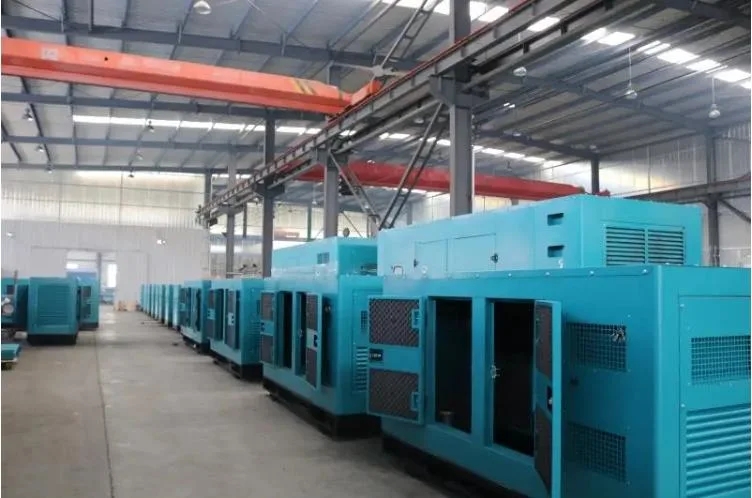Introduction
Diesel generators play a crucial role in providing backup power in various industries, commercial buildings, and remote locations where grid power may not be reliable. However, the use of diesel generators also raises concerns about their environmental impact, particularly in terms of emissions. Monitoring and controlling emissions from diesel generators are essential to ensure compliance with environmental regulations and reduce harmful air pollutants. In this article, we will explore the importance of emissions monitoring for diesel generators, the methods and technologies available for monitoring emissions, and the benefits of implementing effective emissions monitoring practices.
Importance of Emissions Monitoring for Diesel Generators
Emissions from diesel generators can have a significant impact on air quality and public health. Diesel exhaust contains pollutants such as nitrogen oxides (NOx), particulate matter (PM), carbon monoxide (CO), and hydrocarbons, which can contribute to smog formation, respiratory problems, and other health issues. In addition, diesel emissions are also a major source of greenhouse gases such as carbon dioxide (CO2), which contribute to climate change.
Monitoring emissions from diesel generators is essential for several reasons:
1. Regulatory Compliance: Governments around the world have established stringent regulations to limit emissions from diesel generators and other sources of air pollution. Monitoring emissions is necessary to ensure compliance with these regulations and avoid potential fines or penalties for non-compliance.
2. Public Health Protection: Diesel exhaust contains harmful pollutants that can have serious health impacts, especially for vulnerable populations such as children, the elderly, and individuals with respiratory conditions. By monitoring emissions and reducing pollutants, we can protect public health and improve air quality.
3. https://www.lkpowerplant.com/60kw-150kw/ : Diesel emissions contribute to air pollution, smog formation, and climate change. Monitoring emissions from diesel generators is essential to minimize their environmental impact and preserve natural ecosystems.
Methods and Technologies for Emissions Monitoring
Several methods and technologies are available for monitoring emissions from diesel generators. These include:
1. Continuous Emissions Monitoring Systems (CEMS): CEMS are automated systems that continuously monitor emissions from stationary sources such as diesel generators. CEMS measure pollutants such as NOx, CO, CO2, and PM in real-time and provide data for regulatory compliance and environmental reporting.
2. Portable Emissions Analyzers: Portable emissions analyzers are handheld devices that can be used to measure emissions from diesel generators in the field. These analyzers provide real-time data on pollutant concentrations and can be used for emissions testing and troubleshooting.
3. Remote Monitoring Systems: Remote monitoring systems use sensors and communication technologies to monitor emissions from diesel generators remotely. These systems can provide real-time data on emissions performance, alert operators to potential issues, and enable proactive maintenance and mitigation measures.
4. Exhaust Gas Analysis: Exhaust gas analysis involves sampling and analyzing the exhaust gas from diesel generators to measure pollutant concentrations. This method is commonly used for emissions testing and compliance monitoring.
Benefits of Effective Emissions Monitoring Practices
Implementing effective emissions monitoring practices for diesel generators offers several benefits, including:
1. Regulatory Compliance: By monitoring emissions and ensuring compliance with environmental regulations, operators can avoid fines, penalties, and legal issues related to non-compliance.
2. Improved Air Quality: Monitoring and reducing emissions from diesel generators can help improve local air quality, reduce smog formation, and protect public health.
3. Energy Efficiency: Monitoring emissions can also help identify opportunities to optimize the performance of diesel generators and improve energy efficiency, reducing fuel consumption and operating costs.

4. Environmental Sustainability: Effective emissions monitoring practices contribute to environmental sustainability by reducing the environmental impact of diesel generators and mitigating climate change.
Conclusion
Emissions monitoring for diesel generators is essential to ensure regulatory compliance, protect public health, and minimize the environmental impact of diesel exhaust. By implementing effective emissions monitoring practices and utilizing advanced technologies such as CEMS, portable emissions analyzers, and remote monitoring systems, operators can monitor emissions in real-time, optimize performance, and reduce harmful pollutants. Ultimately, emissions monitoring plays a critical role in promoting environmental sustainability and ensuring the responsible operation of diesel generators in a variety of applications.
